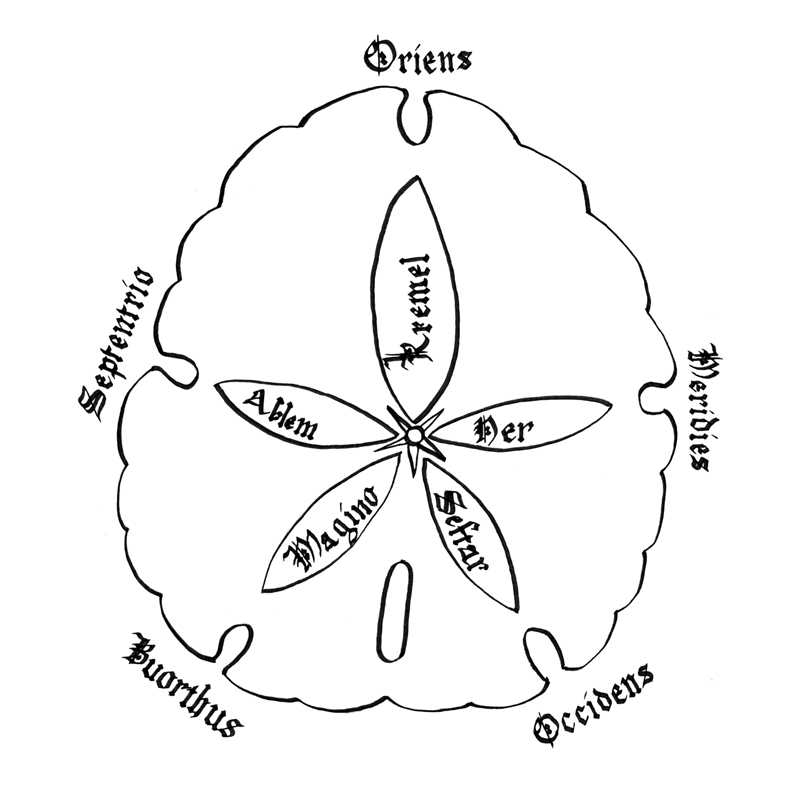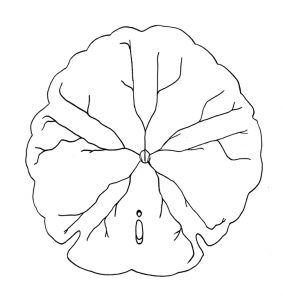
Depicted above is an 8th century TCE medieval Pentarch naturo-graphic world map, or mappa mundi which depicts the five lands known to peoples of this time on the back of a sand dollar, a revered natural object common to the shores of these lands: Kremel, Ner, Ablem, Seftar and Magino. The map was not intended to accurately represent geographic positions of land-masses, but to describe the spiritual harmony of their cosmos, which they believed the humble sand dollar signified.
In order of importance, Kremel contained the bulk of human settlements in this time period, followed by the desert cities of Ner, and the sparsely populated far reaches of Ablem. Seftar, in fact, by this time period had long-since been obliterated in the shockwave caused by the fall of Elgorrah (itself here depicted as a void). And the so-called land of Magino was not actually a land-mass at all, but represented the cloudy domain of the Sky Lords, which the Kremellians still viewed with magico-mythic reverence.
As can be seen in the orientation of the map, in addition to the four cardinal points of Classical culture, Kremellians were unique in that they also recognized a legendary fifth direction, epigraphically represented here as Buorthus (or variously simply ‘Buorth’). It was believed that sailors who set out in the direction of Buorth would be able to pass over the Sea Gate into the hidden realm of Magino.
Esoterically speaking, the Kremello-Seftar sand dollar conception of the universe contained not only an obverse face, depicted above, but also a reverse or under-side, reconstructed from partial sources in the figure below:

It was said that while the top-side of the sand dollar depicted each land-mass as a separate entity, the reverse showed the truth that they were all simply currents emanating from the same shared source. Though Kremellian mythology lacked a formal understanding of the Hypogeum, it is thought that this esoteric cartographic reading was a reflection of early Quatrian Four Ships culture.

Leave a Reply
You must be logged in to post a comment.